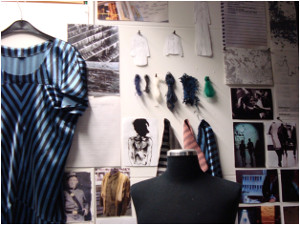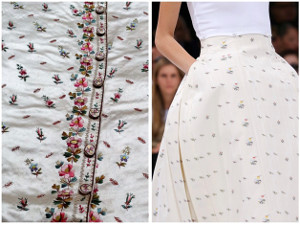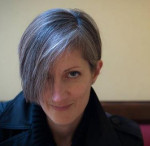Where do designers get their inspiration?
 An example of historical dress meeting modern styling.*
An example of historical dress meeting modern styling.*
Where Designers get Their Inspiration
Some fashion brands deliver new collections twice a year, some every three months and some monthly, and whilst it’s often one designer who heads up a brand, behind every jacket, purse or shoe, there is a large team, working hard to develop and produce the goods in the right colour and for the right price.
Designers can find inspiration anywhere, some designers look to historical costume for shape and design, some are inspired by an art exhibition for a colour or texture and some use street culture as a starting point for the mood and overall look. There are also companies who make their living producing trend research for designers which can be used to validate their initial findings, add to what they have already researched, or act as a start point for the season.
The website http://www.styleindicator.com is a great industry resource for trend information and shows you in detail the source of the inspiration and how it has been translated to the collection. http://www.styleindicator.com/en/style-inspiration-18e-eeuw/
Design teams across the globe have already started their design research for the Spring Summer 2016 collection. At this early stage they are collecting their ideas of colours, fabrics, shapes and overall mood that they feel are integral to the concept or design direction, for their collection. These concept attributes (colour, fabric, shape and mood) all have an impact on the collection that you see in the stores and each of them starts with one simple moment of inspiration and develops out.
In my book, Blue is The New Black, The 10 Step Guide to Developing and Producing a Fashion Collection I devote a whole chapter to concept creation as it influences not only the start of the collection, but also how it’s displayed and sold to the customer as a finished product. Taking a look at each element, will help you to understand and appreciate the thoughts and actions behind the clothes you buy.
Fabrics are very important to the feeling of the concept as they provide a tangible expression of the feeling you want to convey. If you want to evoke a 1920s romantic, nostalgic feeling in a concept, chiffon would be perfect to conjure up an image.
Sitting alongside the selection of fabrics is the colour palette. The palette is a collection of colours (or tones, tints, shades, hues, stain wash or dyes) that is used throughout the collection. The shades selected have to work not only in many of the types of garments but also in the colours of buttons, zips, prints and embroideries.
Shapes within a concept refer to the sizing aspects of the garments in the collection ( length of skirt, height of a heel), and every season the shape of garments and accessories changes for both men and women. For example, in the early 70s the style for trousers was flared at the hem and tight at the waist and hip whilst In the late 70s there was the drainpipe jean that was super tight all over.
When I talk about ‘mood’ I’m talking about an emotional connection that a concept will give. A spring collection for the Hilfiger Runway line had the theme: ‘New York’ Country Club. The concept began with the words Country Club, and from there, images of 60s and 70s women’s sporting clothes, pleated tennis whites, halter neck tops and mini dresses were added to the concept visuals. Images of Katherine Hepburn in her signature high-waist wide leg pants matched with bra tops gave the movie star reference, and the fabrics for the mood were fine chiffons, and checked linens. This ‘mood’ element to the concept can also be used for packaging, a shop display or an advertising campaign.
 Example of a concept from the Amsterdam Fashion Institute AW09 collection.
Example of a concept from the Amsterdam Fashion Institute AW09 collection.
Above shows the mood, colour, fabric and shape.
So next time you are looking at a collection online or in a store, take a look at the colours and fabrics to see if you can understand the concept and mood that the brand is trying to express. Sometimes, it’s easy to see and sometimes it’s quite subtle, but every collection will have one.
* http://www.styleindicator.com/en/resort-2015-communicating-reds/
Susie Breuer
Co-lab54
Guest Writer
Susie lives in San Francisco where she teaches, writes and consults. With over 25 years of fashion industry experience, she specializes in strategic production development solutions for designers and Startup fashion brands.
Blue is The New Black, documents the process of fashion collection creation from start to finish,
and is available internationally in all formats.


